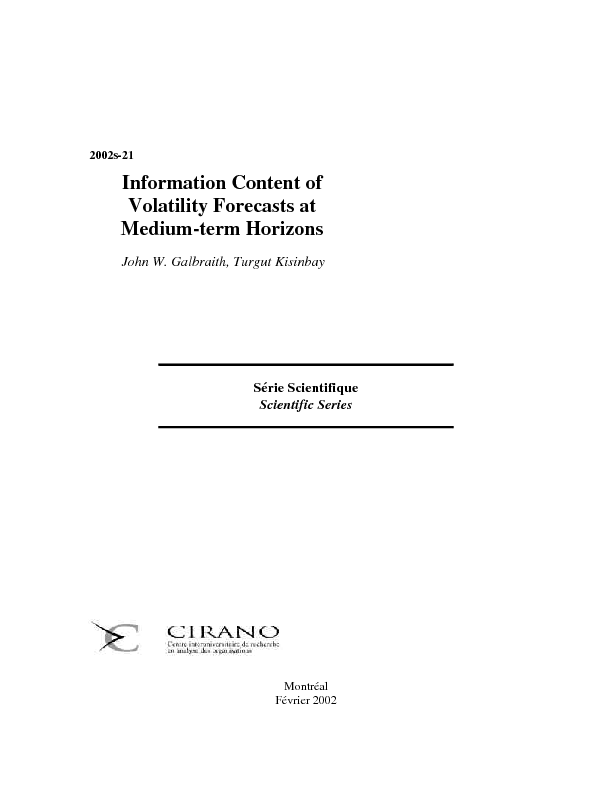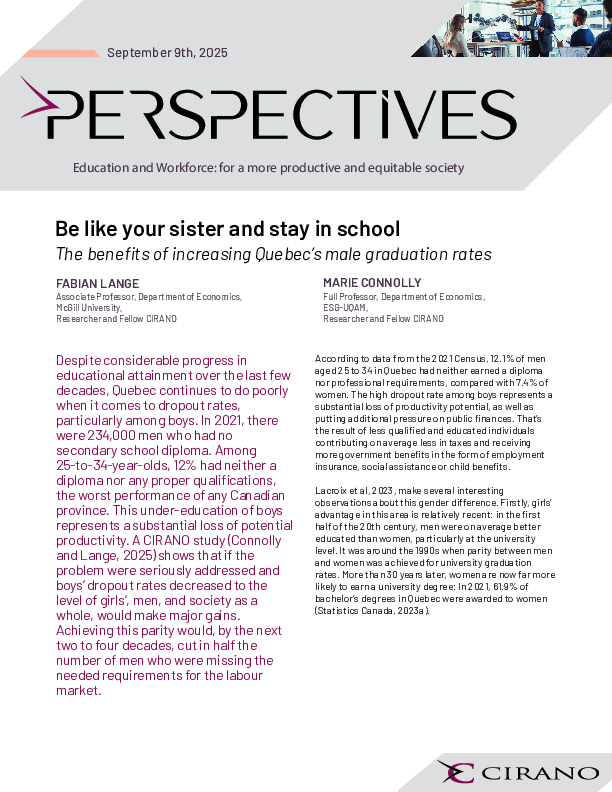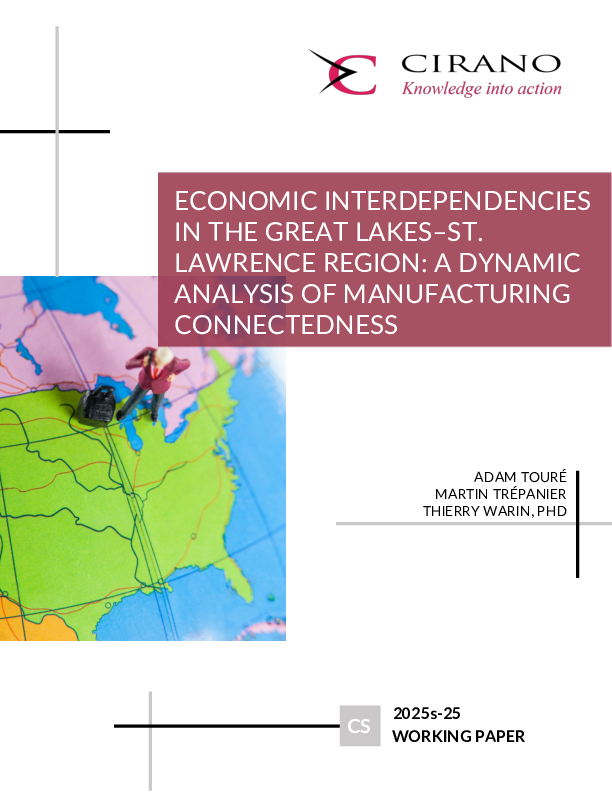Information Content of Volatility Forecasts at Medium-term Horizons
Using realized volatility to estimate daily conditional volatility of financial returns, we compare forecasts of daily volatility from standard QML-estimated GARCH models, and from projections on past realized volatilities obtained from high-frequency data. We consider horizons extending to thirty trading days. The forecasts are compared with the unconditional sample variance of daily returns treated as a daily volatility forecast, allowing us to estimate the maximum horizon at which the model-based forecasts provide forecasting power, measured by MSE reduction. Using data from a Toronto Stock Exchange equity index and foreign exchange returns (DM/$US and Yen/$US), we find evidence of forecasting power at horizons of up to thirty trading days, on each of the three financial returns series. We also find some evidence that the result of (e.g.) Bollerslev and Wright (2001), that projections on past realized volatility provide better 1-step forecasts than the QML-GARCH forecasts, appears to extend to longer horizons up to around ten to fifteen trading days. At longer horizons, there appears to be little to distinguish the forecast methods.
[ - ]




